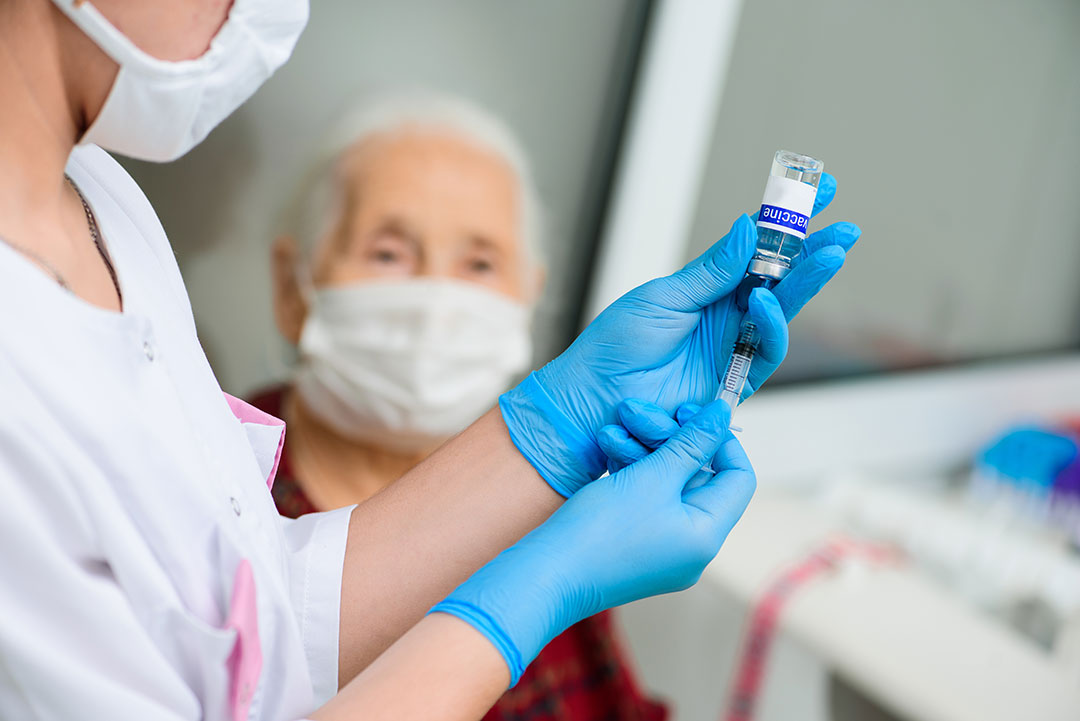What ingredients go into a vaccine?
Vaccines contain active ingredients that trigger an immune response to viruses, bacteria and other pathogens. But in order to work well, it is important that they also contain other key ingredients to keep them safe and effective.
- 21 April 2021
- 4 min read
- by Linda Geddes

Vaccines are one of the most effective medical tools ever created, saving more lives than any other medical or public health innovation. Prior to COVID-19 they were estimated to prevent 2-3 million deaths a year. They do this by using an active ingredient, usually one that is inherently biological, to safely mimic a pathogen in order to trigger an immune response. However, for these active ingredients to be most effective and safe, other equally critical ingredients are needed.
All excipients are subject to rigorous assessment before they can be included in vaccines.
The main ingredient in most vaccines is water. But added to this and the active ingredients are inactive ingredients, or “excipients”, which either boost the immune response to the vaccine or act as preservatives and stabilisers. These are usually included in very small quantities with some found naturally in our bloodstream. Even so, all excipients are subject to rigorous assessment before they can be included in vaccines, to ensure the substances are safe in the quantities used, with systems in place to monitor their safety on an ongoing basis.
Here we take a look at these different types of ingredients and the roles they play.
Active ingredients:
Antigens
Antigens are the core of what makes vaccines work. They are substances that trigger an immune response. In the case of vaccines, the antigen can be the whole inactivated or weakened virus or bacterium you’re trying to trigger a response to; tiny fragments of that pathogen, such as proteins or sugars from it; genetic instructions that tell our own cells how to make those fragments, or weakened viruses used to carry those genetic instructions.
Inactive ingredients:
Adjuvants
Vaccine adjuvants boost the immune system’s response to the antigen. They can do so by keeping the antigen at the injection site for longer, or by stimulating nearby immune cells. For instance, many vaccines contain aluminium salts, which slow down the release of antigens from the vaccine once it is injected, strengthening and lengthening the immune response. They also help to stop proteins in the vaccine from sticking to container walls during storage. The amount of aluminium present in vaccines is small, and well below the maximum levels considered safe for humans. Aluminium salts are also commonly added to foods and other medicines.
Have you read?
Preservatives
Sometimes a preservative will be added to vials of vaccine, but only if it contains more than one dose. This is to prevent harmful bacteria or fungi from contaminating the vaccine each time an individual dose is extracted from it. Even though most vaccines are usually available in single dose vials, which do not contain preservatives, multi-dose vials are often necessary. They play a critical role in global vaccination efforts, particularly in routine immunisation programmes and vaccination campaigns in low- and middle-income countries, where cold storage space for the vaccines is often limited. This is because multi-dose vials occupy less space and often need to be administered to large numbers of people in a short space of time. Examples of preservatives include 2-phenoxyethanol and thiomersal. The latter, which is also called thimerosal, has in the past raised public concern because it contains a mercury-derived compound called ethylmercury. However, unlike methylmercury, which is extremely toxic and can accumulate in the body, ethylmercury is quickly flushed out of the body and extensive research has shown it to be safe to use in vaccines. Despite the overwhelming scientific evidence in its favour, some governments have removed it from vaccines to reassure the public.
Emulsifiers and Stabilisers
Some vaccines require emulsifiers like polysorbate 80, which is often used in food products, to help ensure that the other ingredients remain suspended in the solution. Some emulsifiers can also act as adjuvants by helping to boost the immune response to the vaccine. Stabilisers, such as sorbitol which is found naturally in the body as well as fruit and berries, are used to protect the active ingredients in vaccines against the effects of temperature changes during transportation or storage. They can also help to stop vaccine components from sticking to the walls of their containers. Other examples include: gelatine; sugars such as lactose or sucrose; amino acids, such as glycine; or proteins, such as recombinant human albumin, which is manufactured in yeast.
Residuals
Vaccines may also contain residual trace amounts of materials used during the manufacturing process, and later removed, such as: cell culture media, such as egg white; inactivating ingredients used to kill viruses or make toxins safe, such as formaldehyde; or antibiotics used to prevent bacterial contamination. Any such materials should be listed in the manufacturers' package insert – a written document that accompanies each vaccine container.









